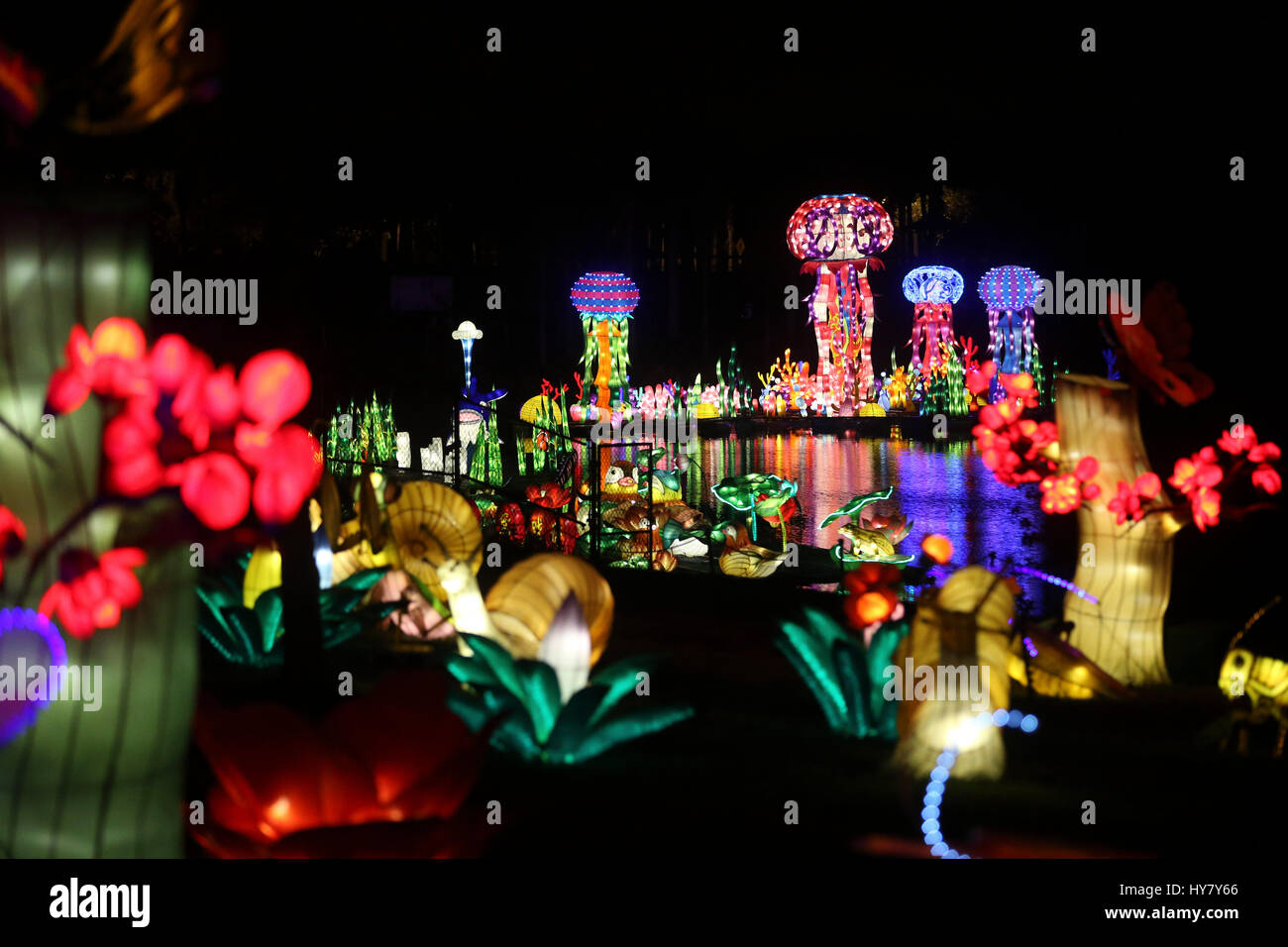
Tickets are required (except for those ages two and under). The North Carolina Chinese Lantern Festival is open seven days a week, including holidays, through the new year.
#Chinese lantern festival boca plus
Food and beverages will be sold, including popcorn, pretzels, coffee and hot chocolate (adults can get those spiked with Bailey's), plus beer and wine.īring your cameras! Photography is encouraged-tag your photos on social media with #visitRaleigh and #NCChineseLanternFestival so we can check them out! Most of the displays have movement or interactive features, some will make you laugh and all of them are visually impressive.īeyond beautiful lanterns, the festival also welcomes a showcase of Chinese culture-nightly stage performances (6:30, 7:30 and 8:30pm) featuring martial arts, traditional dance, acrobatics, drum performances and more.Ī typical guest may take approximately one hour to walk through the entire festival. Other displays include a dazzling kaleidoscope you can step inside, a misty rain garden, a group of playful pandas, a couple of truly magnificent parrots and many more (we won't spoil them all!). The jaw-dropping piece floats on Symphony Lake, just a stones throw from the amphitheater stage.Īnother Dragon-seen in photos above and also below-stands guard in front of the Imperial Palace of the Ming Empire, among the largest displays the festival has ever unveiled.
#Chinese lantern festival boca install
The Dragon-the star of the show and an important cultural symbol in China-weighs more than 18,000 pounds, is longer than three school buses and requires a crane with a 15-person crew to install the head. In all, 2,500 lanterns and more than 15,000 LED lights make up 50 distinct displays, including the return of the spectacular Chinese Dragon. Each lantern at this year's festival was handcrafted and assembled by more than 25 visiting Chinese artisans and performers to our area. Today, they're popularly used to celebrate the Chinese New Year. The lanterns are on hand to showcase the beauty and artistry of the Chinese culture-the art of Chinese lantern making dates back more than 2,000 years, with lantern-crafting skills being passed down from one generation to the next.

A sensory-friendly night will take place on Dec. Booth Amphitheatre has paved walkways and is wheelchair accessible, including the parking area and entrance. More than 200,000 visitors are expected to come from across the state to see the glowing pieces of art.Īccessibility note: This event is a self-guided walking tour. Hundreds of larger-than-life lanterns will be on display, making for an incredible, colorful adventure you can walk through this holiday season. The festival-which only visits a handful of spots around the country each year is presented in Cary in partnership with Tianyu Arts & Culture, Inc.-opens Nov. In 104 B.C., he declared it as one of the most significant celebrations and decreed that the ceremony be held throughout the night.A 200-foot-long, 21-foot-tall dragon has invaded Koka Booth Amphitheatre in Cary, N.C. Yes, the North Carolina Chinese Lantern Festival has returned to the Raleigh area for a seventh time! Emperor Wu of the Han dynasty gave special allure to this event. This annoyed the Jade Emperor in heaven, and in his anger, he formed a storm of fire to engulf the entire village. After it landed on earth, it was hunted down and slaughtered. Yet another widespread legend about the origins of the Lantern Festival talks about an elegant crane that flew down to earth from the heavens.

It is believed that Tianguan likes all types of entertainment, so his followers organize various activities during which they pray and plead for good fortune. Some other legend associates the Lantern Festival with Taoism. Tianguan, being the Taoist deity responsible for good fortune, has his birthday on the 15th day of the first lunar month.

During the Han dynasty, the lantern festival was associated with Ti Yin, the deity of the North Star.

So from there, lighting lanterns developed into a folk custom.īut there’s another origin, most likely a legend - the observation of the declining darkness of winter and how the community can move about at night with human-made light. He decreed that all households, temples, and the imperial palace light lanterns on that evening. However, its roots go way back to over 2,000 years ago and are famously associated with the dynasty of Emperor Ming at the time when Buddhism was evolving in China. Emperor Ming was a supporter of Buddhism, and when he noted how Buddhist monks would often light lanterns in temples on the 15th day of the first lunar month. The origin of the Lantern Festival has brought about various beliefs and conceptions.


 0 kommentar(er)
0 kommentar(er)
